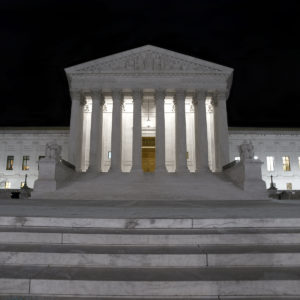The Supreme Court settled the great patent war of our time in December, ruling Apple can’t claim the total profit of Samsung phones for infringing on design patents and answering the central question of what such patents are worth. But the court declined to answer an equally important question the lower courts must now answer — what do such patents actually protect?
The cases landed back at the Court of Appeals for the Federal Circuit Monday, where judges initially upheld a lower court ruling that awarded Apple the total profit of Samsung Galaxy phones for infringing on three iPhone design patents. Judges based their decision on the Patent Act, a 19th century law entitling design patent holders to total profit “disgorgement” from an infringing “article of manufacture.”
The U.S. Supreme Court unanimously ruled against the lower court’s decision, with Justice Sonia Sotomayor writing, “An ‘article’ is just ‘a particular thing,’ not the entire product, in the court’s decision.
“[A]rticle of manufacture is broad enough to encompass both a product sold to a consumer as well as a component of that product,” Sotomayor said.
The court threw out the notion a patent holder should be awarded all of the profits from a product with an infringing design patent by default.
But justices declined to go a step further and define what an article of manufacture is, or outline a test to find out. The Court of Appeals for the Federal Circuit will take up that job, or possibly the California district court where the case was first tried. The next phase of the case will seek to answer what an article of manufacture is as judges recalculate the damages Samsung must pay Apple.
“The Supreme Court’s ruling says that an article of manufacture could be the whole product, but it could be something else — a component or some other part of the product — we don’t know exactly what that is,” attorney Carl Cecere told reporters on a conference call Wednesday. Cecere filed an amicus brief with the court supporting Samsung on behalf of several groups.
Those groups celebrated the case as a win that will disincentivize patent trolls rather than encourage them, as many warned the lower court ruling would, including some of Silicon Valley’s biggest companies. But they say setting the bar too low for significant or full-profit damages could still encourage patent trolling, hurt startups, chill innovation, and favor bigger companies.
“What is the test for identifying the relevant article of manufacture?” asked Derek Dahlgren, a partner at the intellectual property law firm Rothwell Figg. “In their opinion, they essentially invited the federal circuit to address that remaining issue.”
Dahlgren said the case could go back before the same panel of judges that ruled in Apple’s favor to fashion an appropriate framework for identifying the relevant article of manufacture.
The panel could alternatively decide to send the case back down further to the original trial court, the U.S. District Court for Northern California presided over by Judge Lucy Koh. Nine jurors in Koh’s court found Samsung infringed on six out of seven Apple patents, including the rectangular shape and rounded corners of the iPhone and the shape of its app icons in 2012. The court’s initially ordered Samsung to pay Apple $1.05 billion.
Sending it back to trial would give the panel “the benefit of additional factual findings that may, with a more robust record, make it easier to fashion a test for identifying the relevant article of manufacture,” according to Dahlgren.
He added the full Federal Circuit Court of Appeals could decide to hear the case after the panel issues its opinion, either at the request of the parties or its own discretion. That could take the question right back to the Supreme Court.
“Because of the significance surrounding this patent, I think it’s certainly likely the full court would entertain taking that issue on,” Dahlgren said. “I think it’s reasonable to say that there’s a chance it could go back up to the Supreme Court as well, because I think this is a very significant question that’s still outstanding. That is something I think parties are going to grapple with, particularly with some of the design patents out there for graphical user interfaces, for example.”

